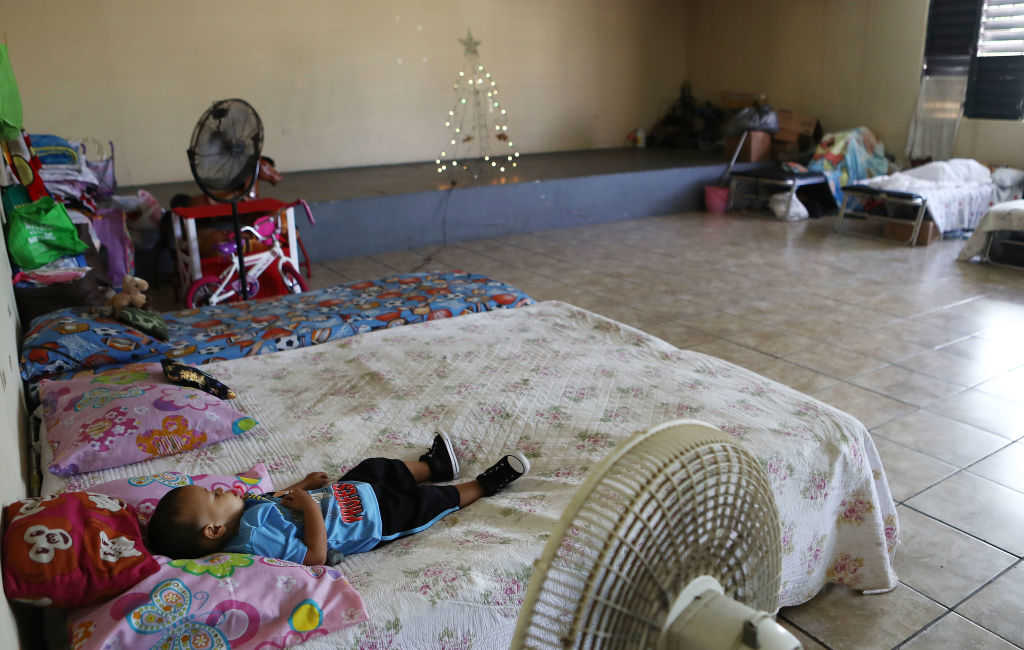In the aftermath of Hurricane Maria, Puerto Rico Governor Ricardo Rossello promised 95 percent of the island’s power would be restored by mid-December, but a new on-the-ground report from the Associated Press paints a grim picture of a nation still reeling from a lack of electricity, clean water, and adequate shelter as residents struggle to stay positive and remain grateful for what little they have.
As the AP reports, Puerto Rico’s Electric Power Authority claims its system is producing about 70 percent of its normal power, but it unclear how widely the electricity is being distributed because the measuring systems are not working. A study conducted by local engineers on December 11 estimated roughly 50 percent of the island’s 3.3 million people remained without power, and the U.S. Army Corps of Engineers believes it will take until May to fully restore power.
In Morovis, a town of 30,000 people that never regained electricity, residents wait in line at city hall for a twice-a-week handout of two dozen water bottles and a cardboard box filled with food items like tortillas, canned vegetables, and cereal. They then queue up at a local public housing complex for use of one of six gas burners in the administrator’s office.
Water service returned to the city and surrounding areas in early November, but prior to that a local creek was used for cleaning and bathing. To this day, clothing is washed and wrung by hand and hung to dry.
Burglaries and looting remain a legitimate concern in the suburbs, especially after night fall.
“Things are not good,” native Miriam Narvaez told the AP.
Back in town, the AP found the situation equally dire. A nail salon owner connected an inverter to the battery of her car and plugged in extension cords, lights, and a fan for her business. Meanwhile, residents continue to unload waterlogged furniture and debris from flooded homes and buildings because city workers never did so and the U.S. Federal Emergency Management Agency did not come until early December to assess the damage. Fitted blue tarps acting as roofs are commonplace.
Maria Rivera, a 50-year-old who has lived in the same home with her husband and three children for nearly two decades, shared that the darkness and lack of resources have taken their toll not just physically but mentally.
“I haven’t been able to assimilate everything that has happened,” she said. “When night falls, you start growing anxious, depressed. Everything has changed… Sometimes I go to places that have power and I tell my husband, ‘I don’t want to go back.’”
For those that are lucky enough to have a generator, the humming begins to fill the air around 4 p.m. each afternoon. Before long, the streets are clear because it is too dark to continue working or milling about. Solar powered lights and candles are the main source of light, and inverters connected to car batteries help keep LED light strips aglow. Extension cords hooked up to generators, meanwhile, act as charging stations for cell phones, though cellular service in Morovis remains unreliable.
With nothing else to do, most of the generators turn off and the candles are extinguished by 9 p.m. as residents call it a night.
“You always have to have a smile on your face,” Wilmary Gonzalez told the AP with tears in her eyes, “because if not, the kids get sad.”
Read the entire report HERE.


